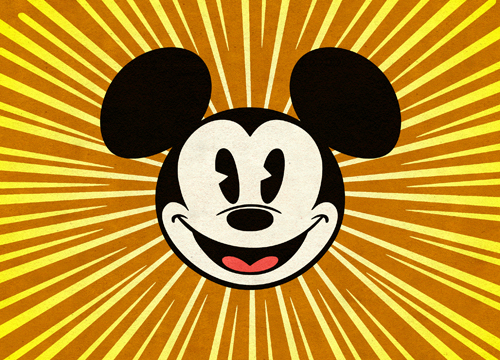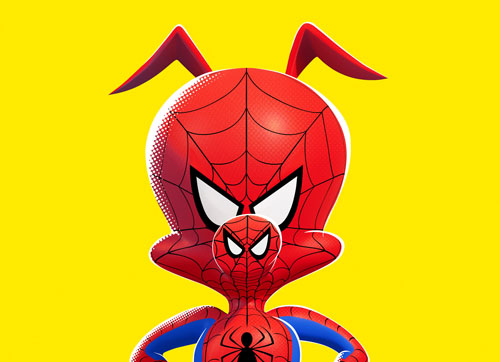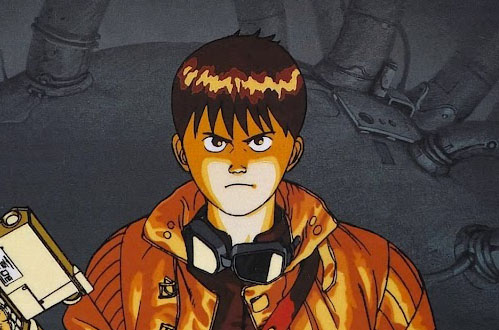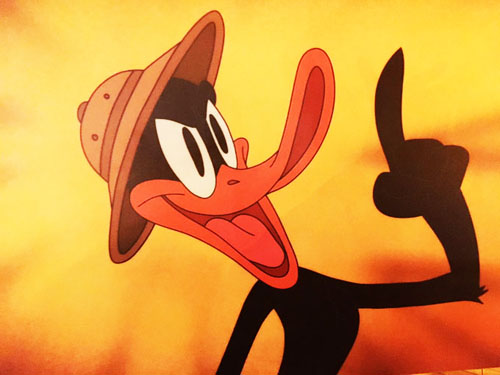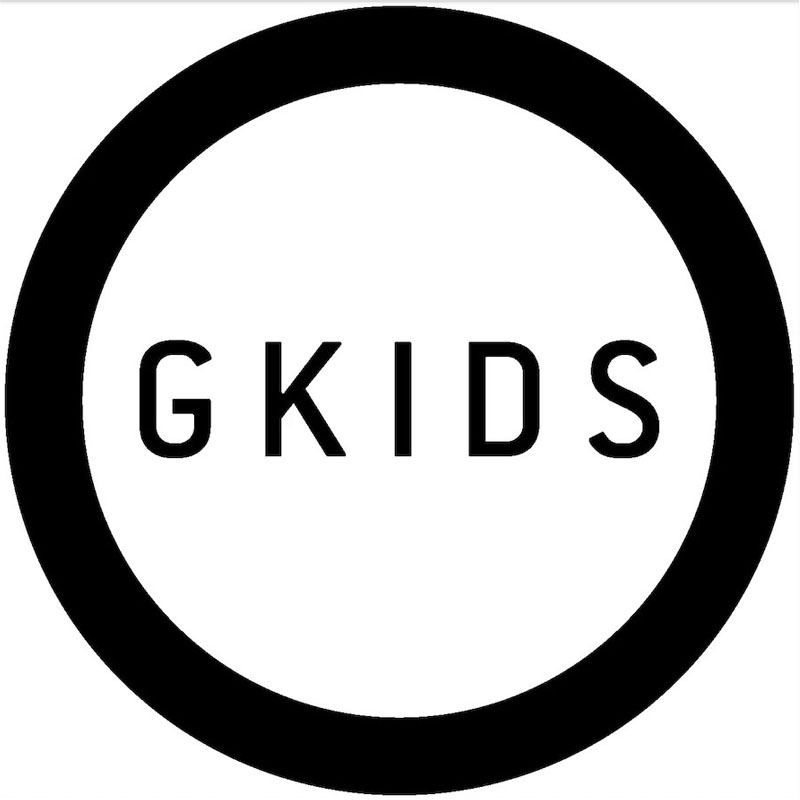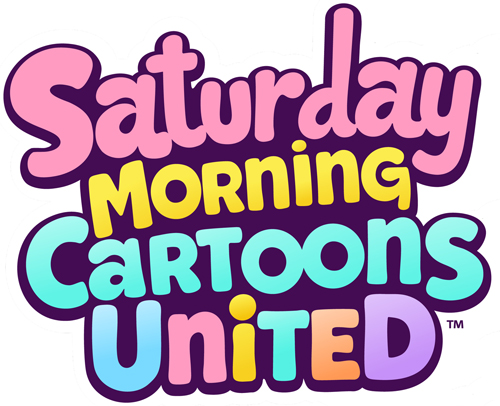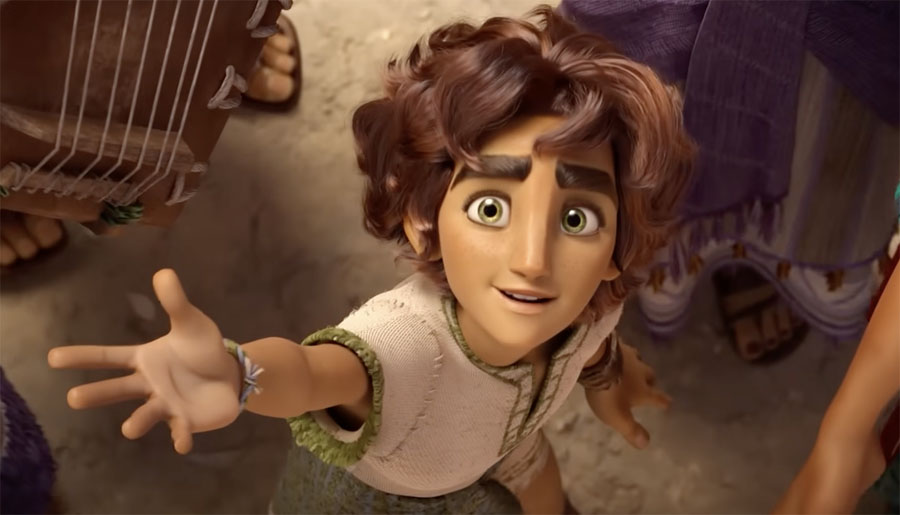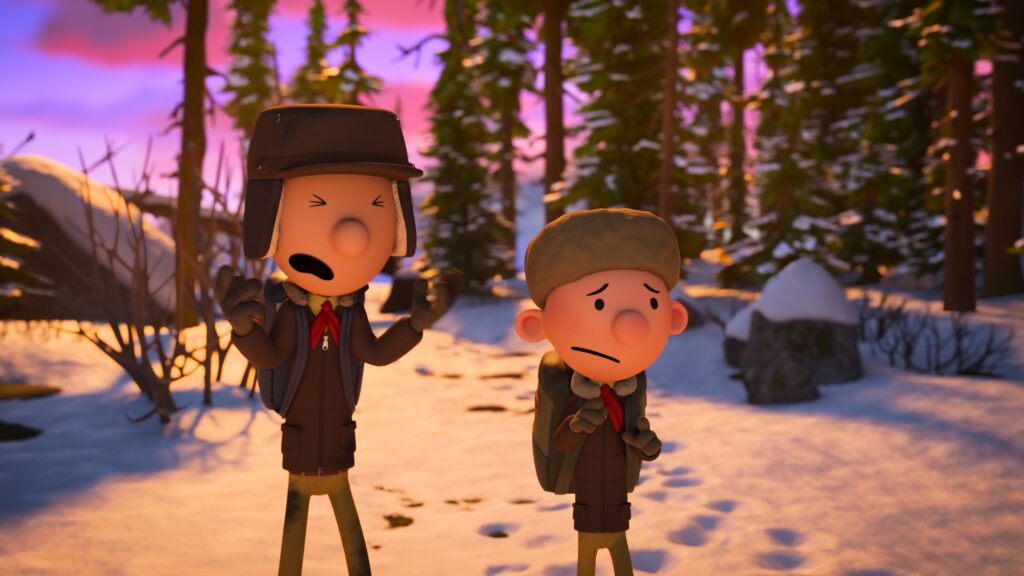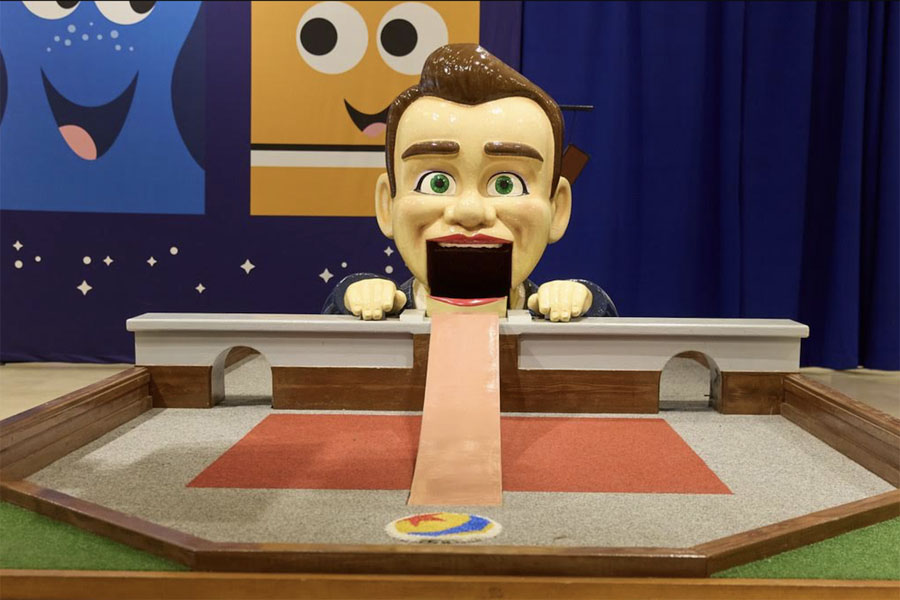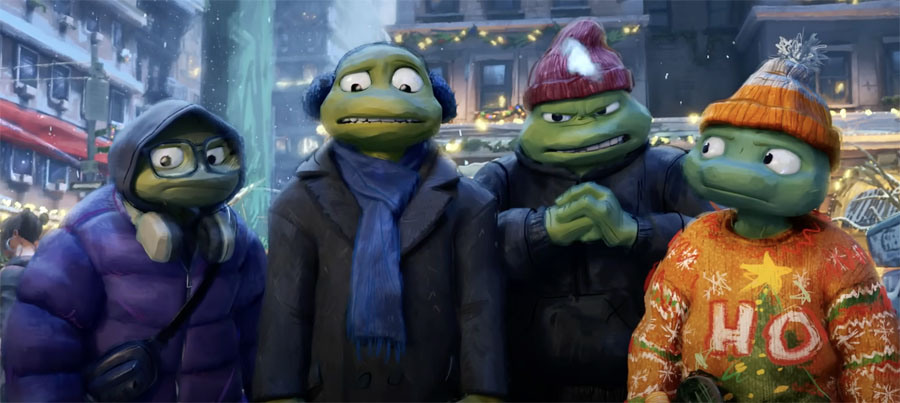This year for the first time, the bi-annual UCLA Festival of Preservation will be presented as a long weekend event, instead of one spread out over a whole month, as in previous years. For three days next month, February 15-17, the archive will present – from 9am to midnight each day – a large selection of newly preserved (most presented in 35mm) features, shorts and television broadcasts the archive has restored over the last two years. Many of these films are rare – or have not been seen in this format and condition in decades. The festival is held at the Billy Wilder Theater in the Hammer Museum, in Westwood, California.
Classic cartoons will be showcased in a special screening beginning at 11am (10:56am to be precise) on Sunday February 17th. A majority of the program is material funded by Asifa-Hollywood – these include a trio of rare 1930s Terrytoons, a duo of Technicolor George Pal Puppetoons and a classic Max Fleischer Betty Boop cartoon.

Jasper Goes Hunting (1944)
Restoration funding provided by The International Animated Film Society, ASIFA-Hollywood.
George Pal won an Honorary Academy Award in 1944 for the development of “novel methods and techniques in the production of short subjects known as Puppetoons.” His achievement was the creation of “replacement animation”—a method still employed by puppet animators today. Jasper Goes Hunting perfectly illustrates this effect as little Jasper daydreams of elephant hunting through a Technicolor Congo. This short is notable for an unusual cameo using (spoiler alert!) Warner Bros. cartoon star Bugs Bunny (voiced by Mel Blanc, animated by Bob McKimson) in a Paramount short—the sort of cross-studio, once-in-a-lifetime team up that literally never happened again—until Who Framed Roger Rabbit 44 years later!—Jerry Beck
35mm, Technicolor, 7 min. Production: Paramount Pictures. Distribution: Paramount Pictures. Producer: George Pal. Director: George Pal.
Restored by UCLA Film & Television Archive. Laboratory services by YCM Laboratories, Audio Mechanics, DJ Audio, Inc., UCLA Film & Television Archive, Fotokem. Special thanks to Paramount Pictures Archives.
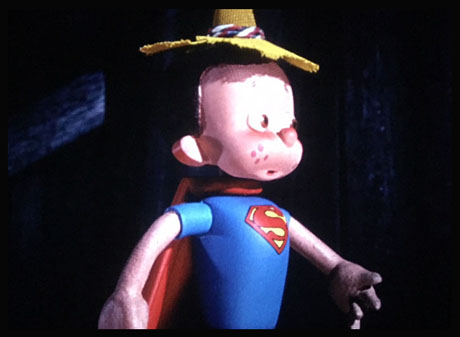
A Hatful of Dreams (1944)
Preservation funding provided by The International Animated Film Society, ASIFA-Hollywood.
George Pal’s stop motion Puppetoons were peopled with all types of characters. Two of his most popular were a pair of lovestruck kids named Punchy and Judy. Here, down-on-his-luck Punchy obtains a magical straw hat from a plucky talking horse and transforms himself into Aladdin and, with the official permission of DC Comics, Superman. Hoping to impress Judy, Punchy’s delusions of grandeur only land him in jail. The talking horse is a witness at Punchy’s trial and cajoles the judge, arresting Officer Moriarty and members of the jury to test the hat, causing their secret selves to emerge inbound, a hilarious spectacle as their unfettered dreams and desire hold sway. —Jerry Beck
35mm, Technicolor, 7 min. Production: Paramount Pictures. Distribution: Paramount Pictures. Producer: George Pal. Director: George Pal.
Restored by UCLA Film & Television Archive. Preserved from the 35mm nitrate Technicolor successive exposure camera negative and an a 35mm acetate track positive. Laboratory services by YCM Laboratories, Audio Mechanics, DJ Audio, Inc., UCLA Film & Television Archive, Fotokem. Special thanks to Paramount Pictures Archives.
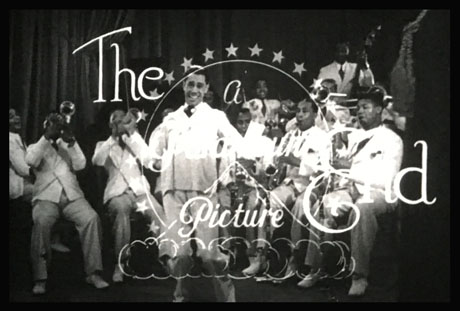
The Old Man of the Mountain (1932)
Preservation funding provided by David Stenn.
The Fleischer Brothers’ third and final pairing of Betty Boop and Cab Calloway, The Old Man of the Mountain (preceded by Minnie the Moocher, 1932, and Snow-White, 1933) opens with Calloway and his orchestra performing a brief version of “Minnie the Moocher” in live action. That’s the last we see of Calloway on screen but he voices all of the characters to come, except for Betty, who’s voiced by Bonnie Poe. Things get animated as the country animals raise a musical alarm, warning of The Old Man on the Mountain, to the melody of Calloway’s composition. Her vacation interrupted, Betty hikes to the peak where she confronts the bearded hermit who, at first, comes off like a misunderstood hepcat: “You’ve got to kick the gong, to get along with me,” he sings in “You’ve Got To Hi-Di-Hi.” When he turns lascivious, Betty makes a break for it and is saved by the animals who race to her rescue. —Jerry Beck
35mm, b/w, 7 min. Production: Fleischer Studios. Distribution: Paramount Pictures. Producer: Max Fleischer. Director: Dave Fleischer. Cast: Cab Calloway and his Orchestra.
Restored by UCLA Film & Television Archive. Preserved from the 35mm nitrate picture and track negatives a 35mm nitrate dupe negative. Laboratory services by YCM Laboratories, Audio Mechanics, Simon Daniel Sound, DJ Audio, Inc., Special thanks to Paramount Pictures Archives, the British Film Institute. A complete list of the program is below.
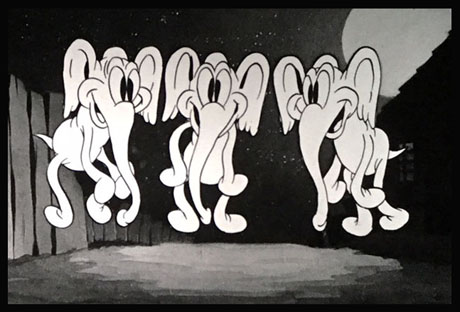
Pink Elephants (1937)
Preservation funding provided by The International Animated Film Society, ASIFA-Hollywood.
In this absolutely lunatic chase comedy, Paul Terry’s most enduring character, Farmer Al Falfa, is run out of his bed and through the house by pink pachyderms conjured when his pet goat eats a few beer cans during a midnight stroll (a scene censored for later Saturday morning kidvid television). The herd of spectral, dipsomaniacal elephants, evoking hi-dee-ho man Cab Calloway along the way, torment Al Falfa until the clever farmer plots his revenge. This is the only Terrytoon co-directed by talented Dan Gordon and the last cartoon at the studio to feature the work of future animation superstars Joe Barbera, Jack Zander and George Gordon, all of whom would leave Terry to reboot MGM’s cartoon studio in Culver City.—Jerry Beck
35mm, b/w, 7 min. Production: Terrytoons. Distribution: Twentieth-Century Fox Film Corporation. Director: Paul Terry and Dan Gordon.
Restored by UCLA Film & Television Archive. Preserved from the 35mm nitrate camera negative and a 35mm nitrate print. Laboratory services by Fotokem, Audio Mechanics, DJ Audio, Inc., UCLA Film & Television Archive. Special thanks to Paramount Pictures Archives.
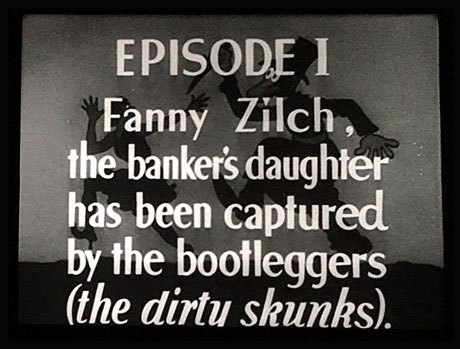
The Banker’s Daughter (1933)
Preservation funding provided by The International Animated Film Society, ASIFA-Hollywood.
Releasing a new cartoon to theaters every two weeks, producer Paul Terry had the idea to create an animated movie serial parodying 1890s melodrama. This was the proposed first installment with four more “chapters” to be released over the next two months. The concept didn’t catch on, but the characters and tropes did—zaftig Fanny Zilch, the damsel in distress, pursued by mustachioed villain Oil Can Harry in his opera hat and the dashing (albeit effeminate) hero Strongheart. The cliffhanger situations and operetta format became a Terry studio staple over the next 20 years, including the return of Oil Can Harry himself, tropes later adopted by Terry’s 1940s-50s “Mighty Mouse” cartoons. Here’s where that all began.—Jerry Beck
35mm, b/w, 6 min. Production: Terrytoons. Distribution: Audio-Cinema, Inc. Director: Frank Moser. Screenwriter: Paul Terry, Frank Moser. Music: Philip A. Scheib.
Restored by UCLA Film & Television Archive. Preserved from a 35mm acetate composite fine grain master. Laboratory services by Fotokem, Audio Mechanics, DJ Audio, Inc., UCLA Film & Television Archive. Special thanks to Paramount Pictures Archives.
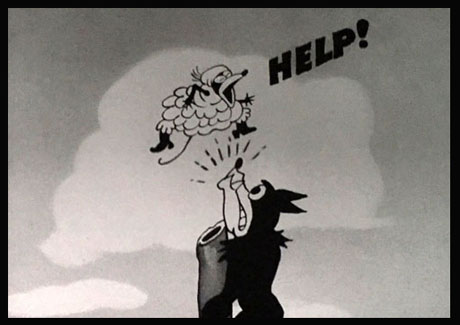
Caviar (1930)
Preservation funding provided by The International Animated Film Society, ASIFA-Hollywood.
The first release from Terrytoons, a new studio run by animators Paul Terry and Frank Moser, formerly of Van Beuren’s popular silent-era Aesop’s Fables. Obtaining a contract from Educational Pictures (“The Spice of the Program”) for 26 sound cartoons a year, Terry made ‘em fast and cheap—but they are not without their charms. In his first year, every cartoon was named after a food that would suggest a setting for the gags and musical score. In this case the gags revolved around life in the USSR; the music, a symphony of pseudo Russian melodies. Note, that’s composer Philip A. Scheib seen in silhouette in an opening prologue.—Jerry Beck
35mm, b/w, 7 min. Production: Terrytoons. Distribution: Educational Film Exchanges, Inc. Director: Paul Terry, Frank Moser. Screenwriters: Paul Terry, Frank Moser.
Restored by UCLA Film & Television Archive. Preserved from a 35mm nitrate print. Laboratory services by Fotokem, Audio Mechanics, DJ Audio, Inc., UCLA Film & Television Archive, Special thanks to Paramount Pictures Archives.
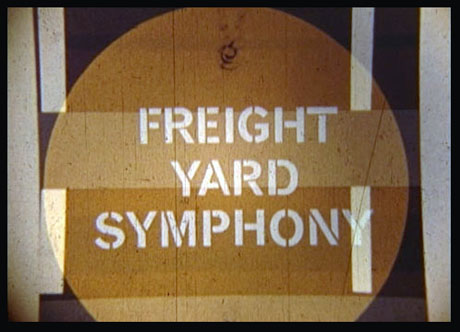
Freight Yard Symphony (1963)
Preservation funding provided by the National Film Preservation Foundation.
This early UCLA student film by noted visual effects pioneer Robert Abel (1937-2001) employs a mixed media approach to distill the kinetic energy of an industrial train depot into bold graphic elements. With a jazz score, Piet Mondrian-inspired lines and Oskar Fischinger-style movement, the highly-accomplished animated short evokes the modernist works of Saul Bass and Ray and Charles Eames.
16mm, color, 6 min. The Motion Picture Division, Department of Theater Arts, U.C.L.A. An Animation Workshop Film. Director: Robert Abel. Story and Design: Robert Abel. Music: Victor Feldman.
Restored by UCLA Film & Television Archive. Laboratory services by FotoKem, Audio Mechanics, Simon Daniel Sound, DJ Audio, Inc. Preserved from 16mm original A/B positives, 16mm mag track and 16mm print.
The cartoons will be followed by a program (at 1:11pm) of newly restored Laurel and Hardy shorts, featuring Perfect Day (1929), which was restored thanks to an incredibly successful UCLA Spark crowdfunding campaign, The Battle Of The Century (1927), Hog Wild (1930) and Brats (1930).
This event is at the Billy Wilder Theater at the Hammer Museum in Westwood, California. Admission to the Festival of Preservation is $50. for blanket admission to all shows, all three days. Advance tickets for just the animation program is $10. click here – or $9 at the box office on the day of the show.
For more information on this festival – click here.
